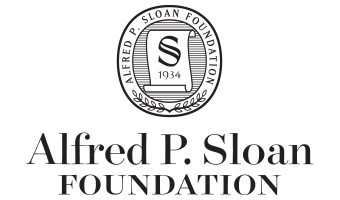Databrary
Rick O. Gilmore
2018-01-29 09:57:43



Agenda
What is Databrary?
How does it work?
Strengths
Weaknesses
Use cases
The future…
What is Databrary?
databrary.org
A data library
Specialized for storing, sharing, browsing, and reusing video & audio
Store and share session (person + place + time) metadata
Policy framework for securely sharing identifiable data
Videos are identifiable
Restrict access: To researchers formally authorized by their institutions
Access agreement signed by researcher, institution
Store for research team use; preservation
Share with other researchers only with permission

https://www.databrary.org/resources/guide/investigators/release/release-levels.html
How does it work?
Register for access
Databrary staff get in touch
Institution signs Databrary Access Agreement
Browsing
Log on
Search, filter, play
Most teaching & pre-research use cases do not require IRB approval
Sharing data
Upload as-as-you go (“self-curate”)
Add metadata, links to other resources
Give collaborators access
Share when you’re ready (paper goes to press, grant ends)
Secondary (re)use
Get IRB approval
Search, filter
Download
Code & use videos
Strengths & weaknesses
Strengths
Large-scale secure cloud storage
Open sharing with restricted community of researchers
Consistent permission framework
Weaknesses
Doesn’t just “sync”" with cloud storage (e.g. Box, Dropbox, etc.)
Manual entry of metadata
New (~4 years old), only 20% of data are shared; limited scope
Use cases
Teaching
Pre-research
Bertenthal, B.I. (2014). Biological Motions. Databrary. Retrieved January 29, 2018 from http://doi.org/10.17910/B7W884.
Sharing research products beyond publications
Adolph, K., Tamis-LeMonda, C. & Gilmore, R.O. (2016). PLAY Project: Materials. Databrary. Retrieved January 25, 2018 from https://nyu.databrary.org/volume/254.
Repurposing shared data
Jayaraman, S., Smith, L.B., Raudies, F. & Gilmore, R.O. (2014). Natural Scene Statistics of Visual Experience Across Development and Culture. Databrary. Retrieved January 25, 2018 from http://doi.org/10.17910/B7988V.
The future
Domains beyond developmental psychology
From data repository to analysis platform
Machine-assisted audio & video analysis
Video as research documentation

Thank you
rogilmore@psu.edu
gilmore-lab.github.io
github.com/databrary
Datavyu video coding tool, datavyu.org
This talk was produced on 2018-01-29 09:57:43 in RStudio 1.1.383 using R Markdown and the reveal.JS framework. The code and materials used to generate the slides may be found at https://github.com/gilmore-lab/2018-01-31-software-in-humanities/. Information about the R Session that produced the slides is as follows:
## R version 3.4.1 (2017-06-30)
## Platform: x86_64-apple-darwin15.6.0 (64-bit)
## Running under: macOS Sierra 10.12.6
##
## Matrix products: default
## BLAS: /System/Library/Frameworks/Accelerate.framework/Versions/A/Frameworks/vecLib.framework/Versions/A/libBLAS.dylib
## LAPACK: /Library/Frameworks/R.framework/Versions/3.4/Resources/lib/libRlapack.dylib
##
## locale:
## [1] en_US.UTF-8/en_US.UTF-8/en_US.UTF-8/C/en_US.UTF-8/en_US.UTF-8
##
## attached base packages:
## [1] stats graphics grDevices utils datasets methods base
##
## loaded via a namespace (and not attached):
## [1] compiler_3.4.1 backports_1.1.0 magrittr_1.5 rprojroot_1.2
## [5] htmltools_0.3.6 tools_3.4.1 revealjs_0.9 yaml_2.1.14
## [9] Rcpp_0.12.12 stringi_1.1.5 rmarkdown_1.6 knitr_1.17
## [13] stringr_1.2.0 digest_0.6.12 evaluate_0.10.1